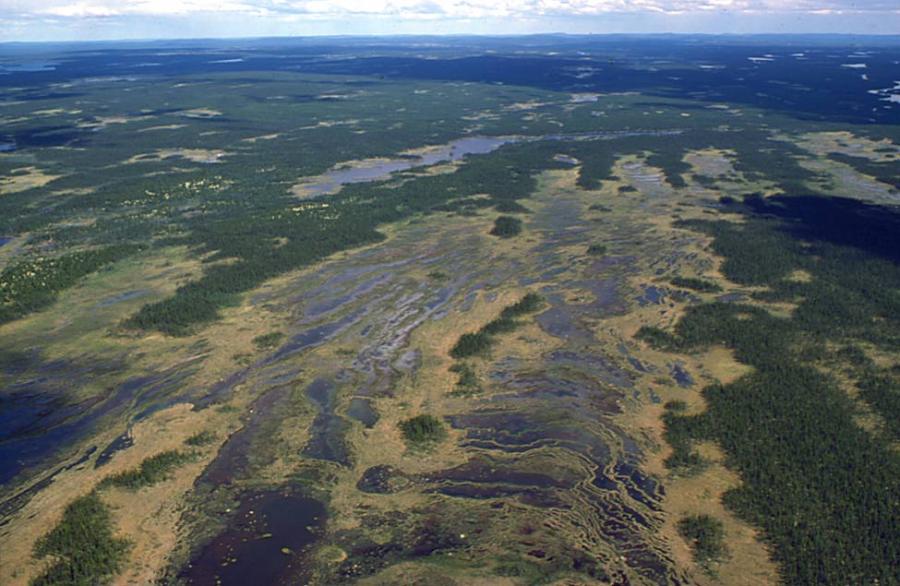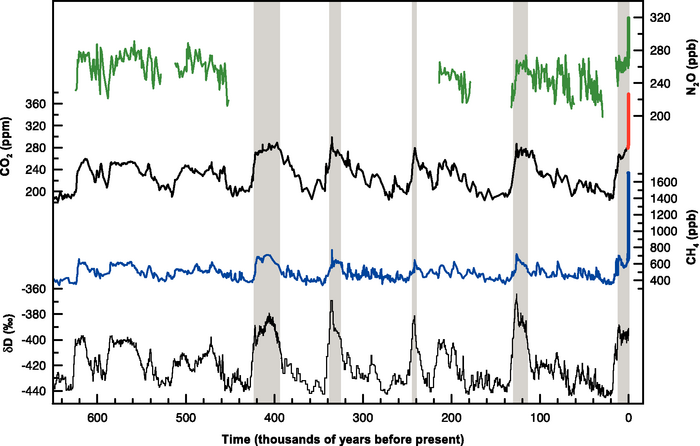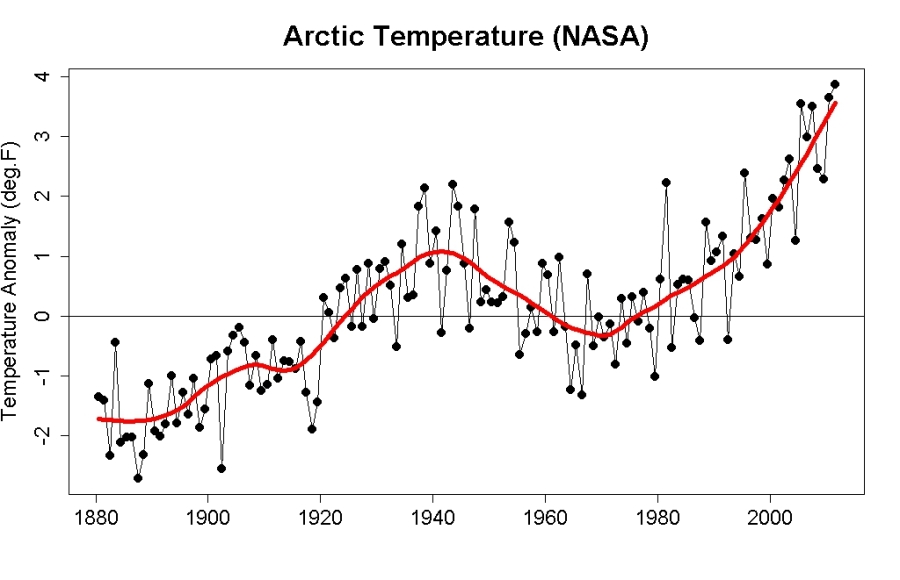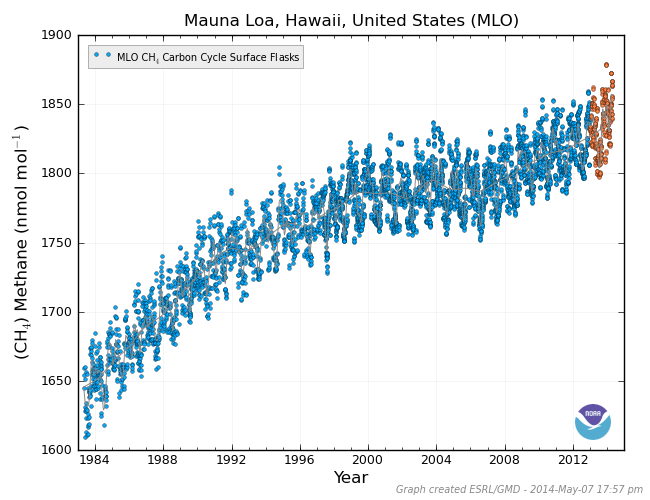The Fens
There's something in the air
-Thunderclap Newman
Air can hurt you too
- Talking Heads
What happens when the permafrost melts? A recent study indicates that the higher water creates swamps, and the anarobic microorganisms turn the stored carbon into methane.
Below is a nice summary of the info to date.
Is it a big deal? Depends on who you ask. The Arctic Methane Emergency Group says yes- see the Arctic News Will the Anthropocene only last 100 years? Real Climate says no :
Here's the author's take from the comments:
As for the final question of where we stand now…
34 teragrams of known emission from the Arctic is about 5.8% of the total global emission. But we must also assume that the known emission is not the total emission (which includes other sea-bed stores). It is probably reasonable to assume that the total Arctic emission is in the range of 40-50 teragrams or between 7-8% of the global total or between 10 and 14% of the human total. This is like adding another large industrial nation’s emissions, multiplying the total rest of world ocean emission by approximately 2.5, or increasing the proportion of ruminants (cow farts) by 40 to 50 percent.
-------
High Velocity Human Warming Coaxes Arctic Methane Monster’s Rapid Rise From Fens
Fens. A word that brings with it the mystic imagery of witch lights, Beowulfian countrysides, trolls, swamp gas, dragons. A sight of crumbling towers overlooking black waters. Now, it’s a word we can add to our already long list of amplifying Arctic feedbacks to human-caused warming. For the rapid formation of Arctic fens over the past decade has now been linked in a recent scientific study, at least in part, to a return to atmospheric methane increases since 2007.
(A Ribbed Fen in Arctic Canada. Image source: The Government of Canada.)
The Role of Methane in Past Climate Change
Over the past 800,000 years, ice core records show atmospheric methane levels fluctuating between about 800 parts per billion during warm interglacial periods and about 400 parts per billion during the cold ice age periods. These fluctuations, in addition to atmospheric CO2 flux between 180 and 280 parts per million value were due to Earth Systems feedbacks driven by periods of increased solar heat forcing in the northern hemisphere polar region and back-swings due to periods of reduced solar heat forcing.
Apparently, added solar forcing at the poles during periodic changes in Earth’s orbit (called Milankovitch Cycles) resulted in a flood of greenhouse gasses from previously frozen lands and seas. This new flood amplified the small heat forcing applied by orbital changes to eventually break Earth out of cold ice age periods and push it back into warm interglacials.
Compared to current human warming, the pace of change at the time was slow, driving 4-6 degrees Celsius of global atmospheric heating over periods of around 8 to 20 thousand years. A small added amount of solar heat gradually leached out a significant volume of heat trapping gasses which, over the course of many centuries, undid the great grip of ice on our world.
(Ice core record of greenhouse gas flux over the last 650,000 years. Methane flux is shown in the blue line that is second from the bottom. It is worth noting that current atmospheric methane values according to measures from the Mauna Loa Observatory are now in excess of 1840 parts per billion value. Temperature change is indicated in the lowest portion of the graph in the form of proxy measurements of atmospheric deuterium which provide a good correlation with surface temperature values. The gray shaded areas indicate the last 5 interglacial periods. Temperature year 0 is 1950. GHG year zero is 2006 in this graph. Image source: IPCC.)
By comparison, under business as usual human fossil fuel emissions combined with amplifying feedbacks from the Earth climate system (such as those seen in the fens now forming over thawing Arctic tundra), total warming could spike to an extraordinarily damaging level between 5 and 9 degrees Celsius just by the end of this century.
Methane — Comparatively Small Volume = Powerful Feedback
A combination of observation of past climates and tracking the ongoing alterations to our own world driven by human greenhouse gas emissions has given us an ever-clearer picture of how past climates might have changed. As Earth warmed, tundra thawed and ice sheets retreated releasing both CO2 and methane as ancient organic carbon stores, trapped in ice for thousands to millions of years, were partly liberated from the ice. In addition, warming seas likely liberated a portion of the sea bed methane store even as warming brought on a generally more active carbon cycle from the wider biosphere.
Overall, the added heat feedback from the increases in atmospheric methane to due these processes was about 50% that of the overall CO2 feedback, even though the volume of methane was about 200 times less. This disproportionately large share of heat forcing by volume is due to the fact that methane is about 80 times more efficient at trapping heat than CO2 over the course of 20 years.
A Problem of High Velocity Thaw
In the foreground of this comparatively rosy picture of gradual climate change driven by small changes in solar heat forcing setting off relatively more powerful amplifying greenhouse gas feedbacks, we run into a number of rather difficult problems.
The first is that the rate at which humans are adding greenhouse gasses to the atmosphere as an initial heat forcing is unprecedented in the geological record. Even the great tar basalts of the end Permian Extinction were no equal to the rate at which humans are now adding heat trapping gasses to the atmosphere. In just a short time, from 1880 to now, we’ve increased atmospheric CO2 by 120 parts per million to around 400 ppm and atmospheric methane by more than 1100 parts per billion to around 1840 parts per billion. The result is an atmospheric heat forcing not seen in at least the past 3 million years and possibly as far back as 10 million years (due to the radical increase in methane and other non CO2 heat trapping gasses).
This extraordinary pace of heat trapping gas increase has led to a very rapid pace of global atmospheric temperature increase of about .15 degrees Celsius per decade or about 30 times that of the end of the last ice age. As atmospheric heat increases are amplified at the poles and, in particular in the northern polar region, the areas with the greatest stores of previously frozen carbon are the ones seeing the fastest pace of warming. Siberia, for example, is warming at the rate of .4 C per decade. Overall, the Arctic has warmed by about 3 degrees Celsius since 1880 or nearly 4 times the pace of overall global warming.
(Pace of Arctic warming since 1880 in degrees Fahrenheit based on reports from 137 Arctic observation stations over the period. Image source: Tamino. Data source: NOAA’s Global Historical Climatology Network.)
The result is that, over the past two decades, the Arctic has been warming at the pace of about .6 C (1 F)every ten years. And what we are seeing in conjunction with very rapid warming is an extraordinary high-velocity thaw. A thaw that is rapidly liberating stored organic carbon locked in tundra at a rate that may well have no rational geological corollary.
The Arctic Methane Monster and a Multiplication of Fens
So it is in this rather stark set of contexts that a study released in early May examining 71 wetlands around the globe found rapidly melting permafrost was resulting in the formation of an immense number of fens along the permafrost thaw boundary zone. Tundra melt in lowlands became both sources and traps for water. Such traps gained added water as atmospheric temperature increases held greater levels of humidity resulting in increased heavy rainfall events such as thunderstorms. These newly thawed and flooded fens, the study found, were emitting unexpectedly high volumes of methane gas.
From the methane standpoint, fens are a problem due to the fact that they are constantly wet. Whereas bogs may be wet, then dry, fens remain wet year-round. And since bacteria that break down the recently thawed organic carbon stores into methane thrive in a constantly wet environment the fens were found to be veritable methane factories. A powerful amplifying feedback loop that threatens to liberate a substantial portion of the approximately 1,500 gigatons of carbon stored in now melting tundra as the powerful heat trapper that is methane.
(Mauna Loa methane levels 1985 to 2014. A return to rising atmospheric levels post 2007 is, in part, attributed to rapid tundra thaw and the formation of methane producing fens. Other significant new methane sources likely include sea bed methane from Arctic stores and rising human methane emissions due to expanding coal use and hydraulic fracturing. Image source:NOAA ESRL.)
By comparison, drier environments would result in the release of stored carbon as CO2, which would still provide a strong heat feedback, but no-where near as powerful as the rapid environmental forcing from a substantial methane release.
Lead study author Merritt Turetsky noted:
“Methane emissions are one example of a positive feedback between ecosystems and the climate system. The permafrost carbon feedback is one of the important and likely consequences of climate change, and it is certain to trigger additional warming. Even if we ceased all human emissions, permafrost would continue to thaw and release carbon into the atmosphere. Instead of reducing emissions, we currently are on track with the most dire scenario considered by the IPCC. There is no way to capture emissions from thawing permafrost as this carbon is released from soils across large regions of land in very remote spaces.”
Links:
posted by Walter @ 7:49 AM
0 Comments
![]()





0 Comments:
Post a Comment
Subscribe to Post Comments [Atom]
<< Home